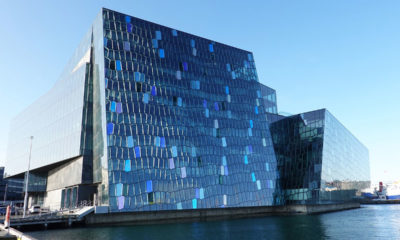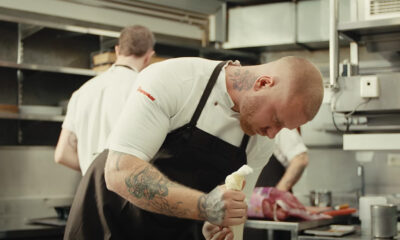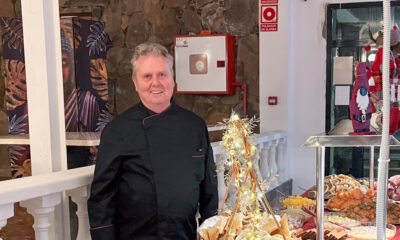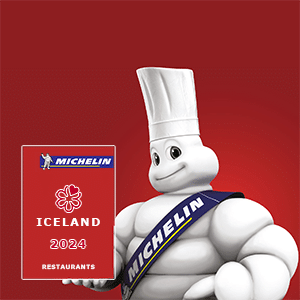Lifid
Classic Treats
By Tom Sietsema
The restaurant world is a fickle one, subject to the whims of diners, the restlessness of ambitious chefs and a little thing called location, location, location. For this Spring Travel Issue of the Magazine, I set out to look at three classic American restaurants in three popular dining destinations: Gene and Georgetti in Chicago, the Tadich Grill in San Francisco and the 21 Club in New York. What accounts for their long lives? Collectively, the trio share about 300 years of success with their straightforward menus, sense of community and uncommon passion. And even after all these years, the food at these landmarks tastes pretty good, too.
A MEAL AT CHICAGO’S Gene and Georgetti (500 N. Franklin St.; 312-527-3718) reminds me that not all steakhouses are created equal. Its recipe for success starts with smart shopping: The beef comes from cornfed cattle in Iowa and Nebraska, and it’s all  prime grade. Once at the restaurant, in the Windy City’s River North district, the meat is aged for almost a month and then butchered by hand. „Hardly anyone does that anymore,“ boasts owner Tony Durpetti. Probably even fewer competitors cook the same way. Durpetti buys gas broilers that reach 850 degrees but are modified by the restaurant to fire up to 1,400 degrees. The intense heat melts fat and gives the sirloins, filets mignons and bone-in rib-eye steaks a distinctive char and crust
prime grade. Once at the restaurant, in the Windy City’s River North district, the meat is aged for almost a month and then butchered by hand. „Hardly anyone does that anymore,“ boasts owner Tony Durpetti. Probably even fewer competitors cook the same way. Durpetti buys gas broilers that reach 850 degrees but are modified by the restaurant to fire up to 1,400 degrees. The intense heat melts fat and gives the sirloins, filets mignons and bone-in rib-eye steaks a distinctive char and crust
Launched by Gene Michelotti and Alfredo „Georgetti“ Federighi in 1941, the plain-looking restaurant, glammed up with a wall of celebrity mug shots, does more than meat. The Italian-American menu runs to pasta, seafood and chicken Vesuvio, but, says Durpetti, „if you want something that’s not on the menu, we’ll make it for you.“ An omelet for dinner, maybe? No problem.
That brand of hospitality makes for lots of regulars, some of whom have been coming here for a very long time. One decades-long habitue, now a Florida resident, routinely reserves tables 11 and 12 near the mahogany bar for the days he visits Chicago. And that bar hosts the same dozen or so guys every lunch. The counter-mates even have a nickname: the Mahogany Club. While the „old regulars“ congregate in the front barroom, Durpetti says „the new regulars“ prefer the rear and upstairs dining areas, both renovated in 1997. At least one waiter has been hoisting plates here for 38 years, and it’s not uncommon for a server to take an order for a whole group without jotting down a word.
Legend has it that the building that became Gene and Georgetti was built with scraps from wood salvaged from the Chicago Fire of 1871. Durpetti can’t verify that, but he will confirm that he’s the son-in-law of Gene, and that he just wanted to help out his mother-in-law when her husband fell sick back in 1989. Watching over the place „was supposed to be temporary,“ he says. Thank goodness it wasn’t.
Entrees $17.50 to $69.75.
A FEW THINGS TO KEEP IN MIND before you sample the Tadich Grill in San Francisco (240 California St.; 415-391-1849): The time to go is lunch, the food to order is fish, and don’t bother calling ahead for a seat. In its long history, „the Tadich,“ as regulars refer to the San Francisco treat, has never taken reservations. Patrons simply show up and wait to be called to a table in a long dining room that sports art deco chandeliers and semiprivate booths. The policy means a sea of suits and lots of clamor at high noon.
regulars refer to the San Francisco treat, has never taken reservations. Patrons simply show up and wait to be called to a table in a long dining room that sports art deco chandeliers and semiprivate booths. The policy means a sea of suits and lots of clamor at high noon.
History buffs will appreciate the story behind the restaurant, which began life as a coffee tent opened by a trio of Croatian immigrants in 1849 (think Gold Rush) and whose location has changed over the decades but has never veered far from its current spot in the city’s financial district. At the Tadich, things are either slow to change or they never change. Until 1990, the restaurant refused to take credit cards; even now, ownership remains Croatian. The loyalty of some customers is such that they merit a food key of their own on the restaurant’s computer.
Meanwhile, the cooking reflects what’s local and good rather than the ego of a chef. Thus there are delicate sand dabs and rex sole, simply broiled over mesquite or pan-fried to a handsome shade of gold, and served on thick white plates inscribed with „The Original Cold Day Restaurant“ on their rim. Crab cakes are shaped from local Dungeness crab, and oysters find their way into the kitchen’s popular Hangtown Fry, a strapping frittata made crisp with bacon and creamy with oysters. Few omelets can compete with this appealing marriage of surf and turf.
If there is one dish you shouldn’t miss, however, it would be the cioppino, the recipe for which was developed by San Francisco’s early Italian American fishermen and which is almost as iconic as the Golden Gate Bridge. Some call it a seafood stew, but that’s incorrect. The clams, mussels, scallops and crab that go into the bowl are sauteed to order, then draped with an herby sauce of chopped cooked tomatoes. The steaming collection is flanked with rafts of garlic toast for sopping up the heady juices. Bliss!
Culinary trends have no place at Tadich Grill. The dessert list features rice pudding, vanilla-scented and comforting. As special as it is on a „cold day,“ I’m happy to eat it anytime.
Entrees $15.50 to $25.75.
FOR MUCH OF ITS LONG RUN, the best dish at the 21 Club in New York (21 W. 52nd St.; 800-721-CLUB) involved faces rather than food. Frank Sinatra claimed his  own table there. Richard Nixon laid down wine in 21’s 20,000-bottle cellar. Writers Claire Boothe Luce and Dorothy Parker famously exchanged insults at the door. („Age before beauty“ Luce announced. „Pearls before swine,“ Parker shot back.) Scenes from „All About Eve“ and „Wall Street“ were filmed in the legendary dining room, which is distinguished by a ceiling of suspended toys and sports memorabilia, and by its illicit past as a speakeasy. It should come as no surprise to learn that this party of a restaurant, which stretches across three townhouses, opened on New Year’s Eve, as 1929 gave way to 1930.
own table there. Richard Nixon laid down wine in 21’s 20,000-bottle cellar. Writers Claire Boothe Luce and Dorothy Parker famously exchanged insults at the door. („Age before beauty“ Luce announced. „Pearls before swine,“ Parker shot back.) Scenes from „All About Eve“ and „Wall Street“ were filmed in the legendary dining room, which is distinguished by a ceiling of suspended toys and sports memorabilia, and by its illicit past as a speakeasy. It should come as no surprise to learn that this party of a restaurant, which stretches across three townhouses, opened on New Year’s Eve, as 1929 gave way to 1930.
In the old days here, patrons supped on chicken hash and steak tartare, dishes that live on as part of the menu’s 21 Classics. Though a series of high-profile chefs has helped update the offerings in recent decades, my inclination is to stay in the past when I order. The time-tested, lime-brightened crab salad features jumbo lump crab, and Dover sole is impeccable, deftly grilled and treated to wild rice and a seasonal vegetable.
Insiders know to request the off-the-menu hunter’s salad of chopped vegetables rather than the more traditional Caesar — which is „What TV Guide is to literature,“ my droll waiter volunteered. The secret to a memorable burger? The kitchen shapes its patties using top round and bits of dry-aged sirloin; seasons them with Dijon mustard, minced onion, duck fat and fresh herbs; and serves the burgers on sourdough rolls with a choice of potatoes. A favorite of Donald Trump and Michael Bloomberg, the 21 Burger last cost $21 in 1987; these days, the signature goes for $27 at lunch and $30 for dinner.
The rules at this country club in the city have relaxed over the years. Taking photographs is no longer forbidden, and ties are no longer required at lunch. They are at dinner, though, which is what George Clooney discovered when he showed up wearing a sweater last fall — a fashion lapse quickly corrected by longtime greeter Shaker Naini (start date September 21, 1976), who proffered the actor a tie from 21’s collection of 20 or so designer labels.
Entrees $30 to $46.
Denise Aitchison and her husband were recent diners at Belga Cafe (514 Eighth St. SE; 202-544-0100), where they shared an appetizer, ordered two entrees and split a dessert that their server had recommended as „perfect for sharing,“ the Washington reader wrote in an e-mail. The couple were subsequently surprised to see a $3 splitting charge on their bill for the jointly eaten first and final courses. „I understand why a restaurant might feel it necessary to charge an extra fee for sharing an entree, but an appetizer?“ Aitchison asked in an e-mail. She says she has never been billed for sharing food in a restaurant before, „and I don’t recall anything on the menu about the extra charges.“ The restaurant’s manager, Galia Kaplan, confirmed the $1.50 fee, which does not appear on the menu, but said the charge is „seldom used,“ and then mostly for split entrees and with large groups. The server erred, Kaplan said, adding that she hoped the couple would contact her so she „could make them happy.“
The Washington Post
Örn Garðarsson

-

 Viðtöl, örfréttir & frumraun2 dagar síðan
Viðtöl, örfréttir & frumraun2 dagar síðanÍsland tók yfir eldhúsið á VOX þegar Sævar Lárusson og Rúrik mættu til leiks
-

 Viðtöl, örfréttir & frumraun5 dagar síðan
Viðtöl, örfréttir & frumraun5 dagar síðanTímamót fyrir íslenska barþjóna með nýjum samstarfssamningi
-

 Kokkalandsliðið5 dagar síðan
Kokkalandsliðið5 dagar síðanNýr þjálfari kokkalandsliðsins, Georg Arnar leiðir liðið til Lúxemborgar 2026
-

 Viðtöl, örfréttir & frumraun5 dagar síðan
Viðtöl, örfréttir & frumraun5 dagar síðanMatarmarkaður Íslands í Hörpu um helgina, fjölbreyttur markaður fyrir veisluborðið og jólagjafir
-

 Viðtöl, örfréttir & frumraun4 dagar síðan
Viðtöl, örfréttir & frumraun4 dagar síðanEr þetta besta jólatréð í bænum, á bragðið? – Vídeó
-

 Markaðurinn3 dagar síðan
Markaðurinn3 dagar síðanHættulega góðar ostakökukúlur með Biscoff og hvítu súkkulaði
-

 Keppni5 dagar síðan
Keppni5 dagar síðanWoodford Reserve Old Fashioned Week haldin í fyrsta sinn á Íslandi – Myndir
-

 Viðtöl, örfréttir & frumraun2 dagar síðan
Viðtöl, örfréttir & frumraun2 dagar síðanKristján Örn matreiðslumeistari bauð upp á glæsilegt jólahlaðborð á Gran Canaria – Myndir












